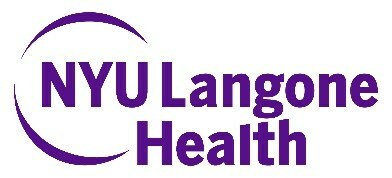NYU Langone Neurologists Present Latest Clinical Findings & Research at AAN 2024
PR Newswire
DENVER, April 13, 2024
DENVER, April 13, 2024 /PRNewswire/ -- Experts from NYU Langone's Department of Neurology present their latest clinical findings and research discoveries at the American Academy of Neurology (AAN) 2024 Annual Meeting, April 13 to 18, in Denver.
Among the topics presented:
- measuring effects of burnout and appreciation practices within a neurology department
- using sophisticated magnetic resonance imaging (MRI) to better understand changes in the brain among migraine patients
- how vision tests can help detect precursors to Alzheimer's disease
"Neurology covers a diverse array of scientific discovery, and that is demonstrated by the incredible presentations at this year's AAN annual meeting," said Steven L. Galetta, MD, the Philip K. Moskowitz, MD, Professor and Chair of Neurology in the Department of Neurology at NYU Grossman School of Medicine. "Our faculty continue to push the entire field forward in its understanding of the brain and its capacity to shape human life."
U.S. News & World Report's "Best Hospitals" ranks NYU Langone the No. 1 hospital in the country for neurology and neurosurgery; its Department of Neurology includes 18 divisions and centers.
At this year's meeting, there are more than 50 presentations by Department of Neurology faculty—below are some of the more notable.
Measuring Burnout and Practices of Appreciation Within a Neurology Department: Identifying Prevalence and Shaping Solutions
Physician burnout poses significant challenges to healthcare and personal wellbeing, particularly among neurologists. Researchers at NYU Langone surveyed 90 clinicians, residents, and fellows to identify the best methods of showing neurologists that they are valued in order to improve their job satisfaction and reduce burnout.
The results revealed that transparent efforts to reduce daily frustrations and strengthen inclusion in decision-making processes were highly valued by both faculty and trainees. However, institutional awards and themed gifts received low ratings from both groups. The findings can guide the implementation of preferred recognition methods, with potential applicability to other organizations seeking locally customized approaches to burnout mitigation.
"Our findings underscore the importance of tailored approaches to recognition and appreciation in combating burnout within healthcare settings," said Neil A. Busis, MD, principal investigator for the study and clinical professor in the Department of Neurology.
Neurological Changes in Migraine Patients Assessed with High-Gradient Diffusion MRI
Researchers used high-gradient diffusion MRI, which uses special software and higher sensitivity imaging, to better understand the inner workings of brain tissue among patients with migraine. The study reviewed the brains of 16 migraine patients experiencing aura—an often-visual disturbance prior to a headache or seizure—and 16 patients without migraine.
The results reveal significant alterations in the structure of both gray and white brain matter of migraine patients compared with people who do not experience these severe headaches. This research underscores the importance of advanced imaging techniques in elucidating the structural alterations underlying neurological disorders like migraine, offering potential avenues for targeted therapeutic interventions to mitigate associated risks and improve patient outcomes.
"Our findings underscore the presence of occult changes in gray and white matter in migraine patients, potentially explaining decreased brain volumes and the development of white-matter lesions seen on conventional MRI," said Katharina Eikermann-Haerter, MD, corresponding author on the study and associate professor in the Department of Radiology.
The discovery may shed light on the association between migraine and cognitive impairment, stroke risk, traumatic brain injury, and accelerated growth of tissue death.
Visual Tests to Detect Precursors to Alzheimer's Disease
Mild cognitive impairment (MCI) can be an early sign of Alzheimer's disease, and is critical to identify in order to determine a patient's eligibility for successful therapy or participation in clinical trials. Currently, biomarkers of MCI require invasive spinal fluid tests or costly neuroimaging. Researchers tested whether inexpensive, easily deployed visual tests could help in detection.
"Identifying noninvasive and cost-effective biomarkers for MCI is crucial for early detection and intervention in Alzheimer's disease," said Arjun V. Masurkar, MD, PhD, senior co-author of the study and assistant professor in the Department of Neurology.
The patients with MCI exhibited significantly poorer performance on the two tests administered compared with their healthy counterparts, suggesting the tests' potential use in early Alzheimer's disease detection. There were 75 participants recruited into the study.
Overall, the findings suggest that certain visual tests have potential as noninvasive biomarkers for MCI. Further research is warranted to validate these findings and their potential to enhance early detection and intervention strategies for Alzheimer's disease.
Media Inquiries
Colin DeVries
Phone: 212-404-3588
Colin.DeVries@NYULangone.org
![]() View original content to download multimedia:https://www.prnewswire.com/news-releases/nyu-langone-neurologists-present-latest-clinical-findings--research-at-aan-2024-302115822.html
View original content to download multimedia:https://www.prnewswire.com/news-releases/nyu-langone-neurologists-present-latest-clinical-findings--research-at-aan-2024-302115822.html
SOURCE NYU Langone Health System



